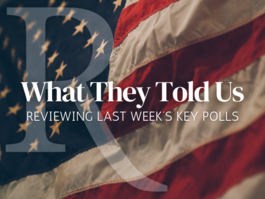Is the Sunbelt Ready for Urbanity?
A Commentary By Froma Harrop
HOUSTON -- Houston faces a crossroads, or to be more precise, a five-level stack interchange. Is it going to nurture compact walkable neighborhoods? Or is it going to do what it has always done -- stand back and watch developers build anything anywhere?
This, America's fourth-largest city and quintessence of Sunbelt sprawl, seems ready to encourage more thoughtful development. No one mentions "zoning," which remains a radioactive word around here. Even "planning" is pushing it.
Peter Brown, an architect/urban planner who unsuccessfully ran for mayor in 2009, wants the city to provide developers with incentives to advance a more urbane vision. No one is being forced to do anything, he told me. "But if the city is going to pay the piper, we play the tune."
Old guard suburban developers argue otherwise. "Why mess with success?" they ask. Houston has prospered from low taxes and cheap housing, due in part to the lack of rules. Urban planning is for coastal "elites," not freewheeling Texans.
Such thinking assumes that the future will be a continuation of the past. The city's growing urbanist community warns against complacency.
"The whole dynamic of what it took to succeed has changed," insists Rice University sociologist Stephen Klineberg.
Early last century, Houston boomed as a terminal for the East Texas Oil Field. "You didn't need education to make money," Klineberg says. Energy remains the big employer, but today it's a knowledge industry -- more about servicing producers around the globe than pumping the nearby crude.
Urbanists like Brown believe Houston must attract young innovators who could live anywhere but prefer pedestrian-friendly neighborhoods with restaurants and coffee shops. "The creative class is not coming to Houston," Brown says, and that worries him.
Under this landscape, meanwhile, a demographic earthquake rumbles in this city of more than 2 million souls. Seventy percent of residents over 60 are Anglo. More than 75 percent under 30 are not, the biggest group being Latino and largely poor.
Seven out of 10 freshmen in the Houston Independent School District don't graduate from high school. Whether the cause is bad schools, culture or both, that is a matter for grave concern.
On the good-news side, Houston remains an impressive job machine with seven commercial centers -- the shining Central Business District being just one of them. Some 1 million people are expected to move to the region in the next 20 years, and the city has vast vacant tracts on which to build.
The best news, though, is that despite the city's reputation for being "ugly, flat, polluted and hot," the great majority of metro residents really like the town, according to the latest Houston Area Survey, which Klineberg oversees. The report also found that as many suburbanites want to move into the city as city people wish to decamp for the 'burbs. (It used to be that twice as many wanted to move out.)
How does one create urbanity in Houston? Oddly, the city once had a good streetcar system, notes David Crossley, head of Houston Tomorrow, which pushes for commuter rail. "The old streetcar neighborhoods have always been very walkable, albeit often with substandard sidewalks," Crossley told me. "Those are the places we see people doing urbanism, sometimes against all odds."
Houston is now adding 30 miles of light rail to its current 7 miles. The hope is that the new lines will spur urban development, as happened in Dallas.
Houston doesn't offer fine beaches, mountains or clean air, but it does boast a friendly, open and entrepreneurial spirit. Can Houston build an urban environment in which nomadic information workers will choose to live in the 21st century? Sure. But the bigger question is: Does Houston want to?
COPYRIGHT 2010 THE PROVIDENCE JOURNAL CO.
DISTRIBUTED BY CREATORS.COM
See Other Political Commentary.
See Other Commentaries by Froma Harrop
Views expressed in this column are those of the author, not those of Rasmussen Reports.
Rasmussen Reports is a media company specializing in the collection, publication and distribution of public opinion information.
We conduct public opinion polls on a variety of topics to inform our audience on events in the news and other topics of interest. To ensure editorial control and independence, we pay for the polls ourselves and generate revenue through the sale of subscriptions, sponsorships, and advertising. Nightly polling on politics, business and lifestyle topics provides the content to update the Rasmussen Reports web site many times each day. If it's in the news, it's in our polls. Additionally, the data drives a daily update newsletter and various media outlets across the country.
Some information, including the Rasmussen Reports daily Presidential Tracking Poll and commentaries are available for free to the general public. Subscriptions are available for $4.95 a month or 34.95 a year that provide subscribers with exclusive access to more than 20 stories per week on upcoming elections, consumer confidence, and issues that affect us all. For those who are really into the numbers, Platinum Members can review demographic crosstabs and a full history of our data.
To learn more about our methodology, click here.



